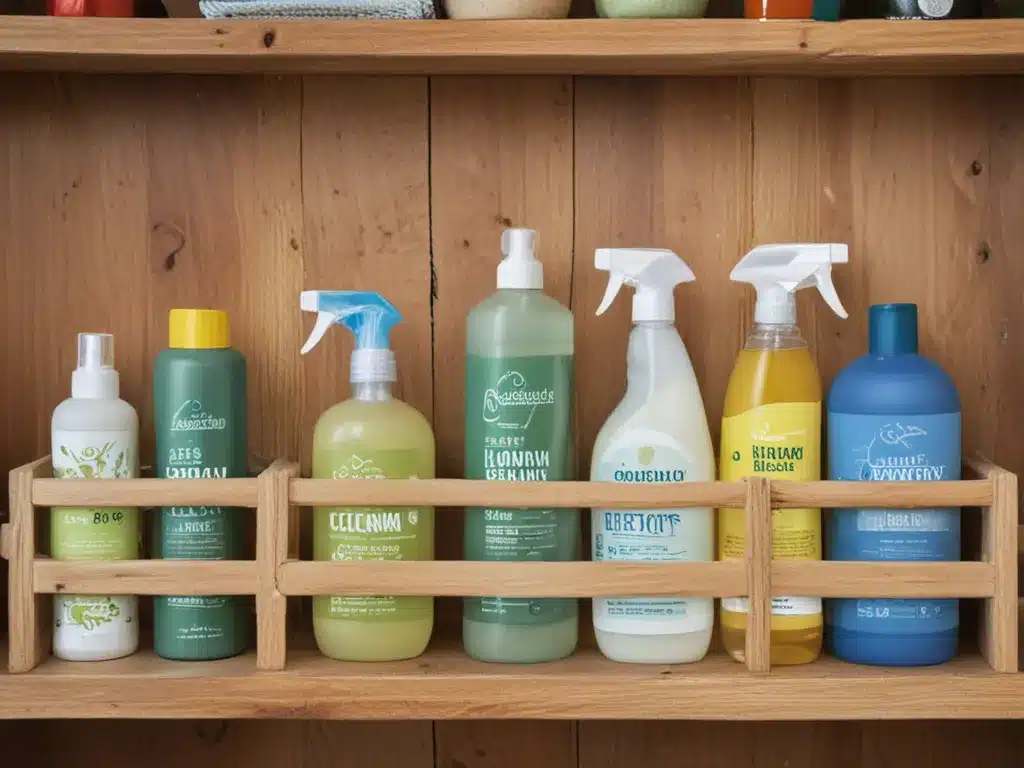Introduction
Keeping a sustainable cleaning kit fully stocked can seem daunting, but it’s easier than you think! A well-organized kit filled with eco-friendly cleaning supplies ensures you’re ready to clean your home efficiently while protecting the environment. In this guide, I’ll share my tips for building and maintaining a green cleaning kit.
Assess Your Cleaning Needs
Before stocking your kit, take inventory of your home’s cleaning needs. Consider the following:
-
Surfaces – What types of surfaces and materials do you clean regularly? Examples: tile, wood floors, granite, stainless steel, glass, toilets, showers.
-
Tools – What tools do you need? Dusters, microfiber cloths, scrub brushes, mops, vacuum, etc.
-
Problem areas – Note any problem spots that require heavy-duty cleaning, like cooktops, bathrooms, or pet areas.
-
Frequency – How often do you clean each room or area? Daily, weekly, monthly?
Once you know your typical cleaning tasks, you can determine what supplies to have on hand.
Choose Eco-Friendly Products
The core of your kit is the cleaning products themselves. Look for plant-based, non-toxic, biodegradable options that get the job done without harmful chemicals. Here are some to include:
-
All-purpose cleaner – For most surfaces, try a vinegar- or citrus-based spray.
-
Bathroom cleaner – Opt for an eco-friendly disinfecting cleaner or DIY baking soda scrub.
-
Glass & window cleaner – Vinegar or alcohol-based spray works great.
-
Floor cleaner – For tile, wood, and vinyl, use plant-based cleaner.
-
Laundry detergent – Choose an eco-friendly powder, liquid, or single packet.
Stock Up on Reusable Supplies
In addition to cleaners, a sustainable kit needs reusable supplies to cut down on waste. Here are some essentials:
-
Microfiber cloths – Durable, lint-free cloths for dusting and cleaning.
-
Scrub brushes – For tiles, grout, tubs, sinks, and more scrubbing needs.
-
Mop heads – Washable microfiber mop heads are reusable.
-
Sponges – Cellulose sponges made from plant fibers are compostable.
-
Buckets – At least two buckets, one for washing and one for rinsing.
-
Vacuum – A vacuum with reusable filters and bags.
Organize Supplies for Easy Access
With an ample stash of cleaners and tools, the next step is proper organization. Consider these tips:
-
Store supplies together in a caddy, bucket, or tote for portability.
-
Label spray bottles clearly so you can identify contents at a glance.
-
Hang mops, brushes, and dusters from hooks on the wall.
-
Place microfiber cloths and sponges near sinks.
-
Keep a bucket filled with cleaning solution and a rinse bucket ready.
Proper organization makes cleaning faster and easier.
Track What Needs Replenishing
The key to maintaining a well-stocked kit is keeping track of what needs restocking. Here are some helpful strategies:
-
Place a notepad inside your supply caddy to jot down items as they run low.
-
Set reminders on your phone to take inventory every 1-2 weeks.
-
Create a spreadsheet to monitor supply levels.
-
Affix a checklist inside a cabinet door to mark off depleted items.
Shop Sustainable Replacements
When it’s time to restock, look for sustainable replacements. Here are some tips:
-
Buy cleaners and sponges in bulk to reduce packaging.
-
Reuse spray bottles – just replace the solution.
-
Seek out concentrated cleaners to dilute at home.
-
Choose products with compostable or recyclable packaging.
-
Purchase from eco-friendly brands online or locally.
With a little planning, it’s easy to keep a green cleaning kit ready for any cleaning needs. A routine assessment of supplies and restocking ensures you always have the sustainable products and tools for a sparkling clean home.







